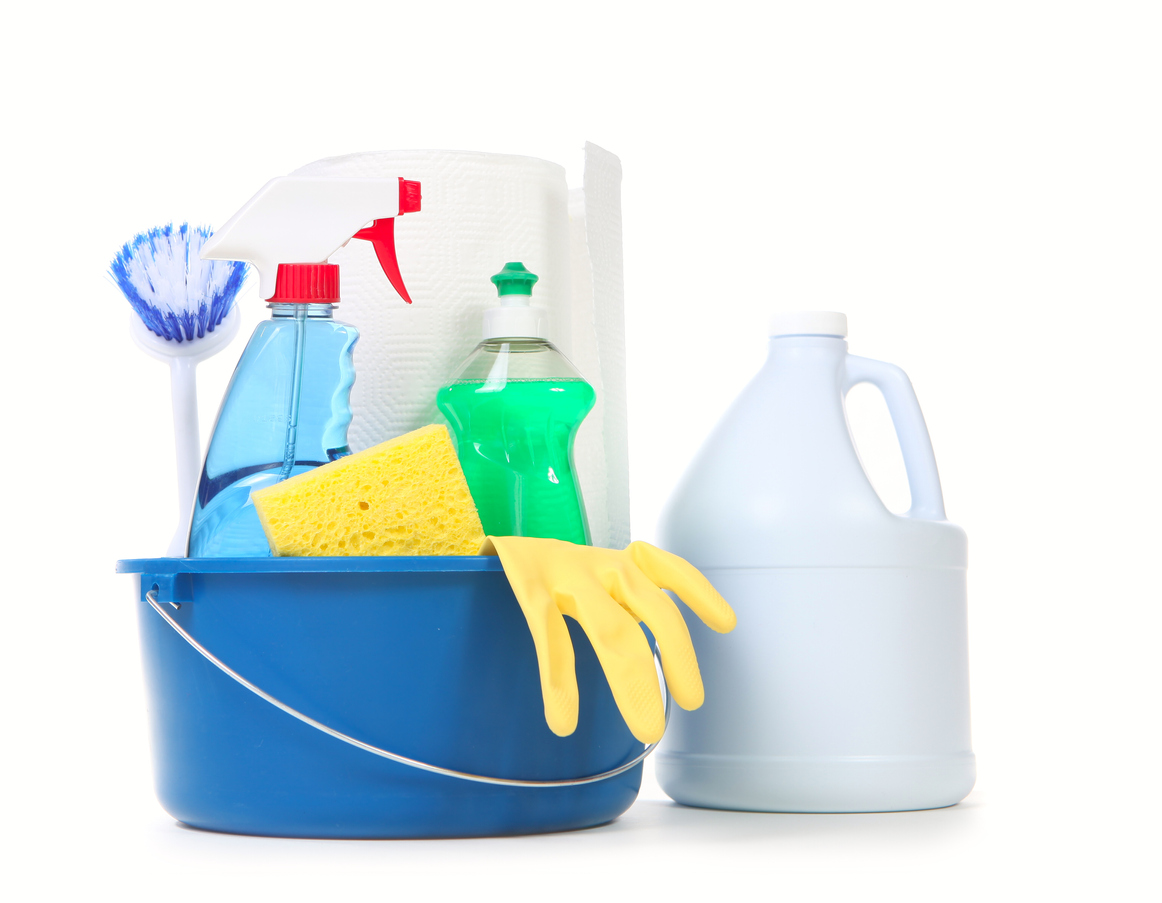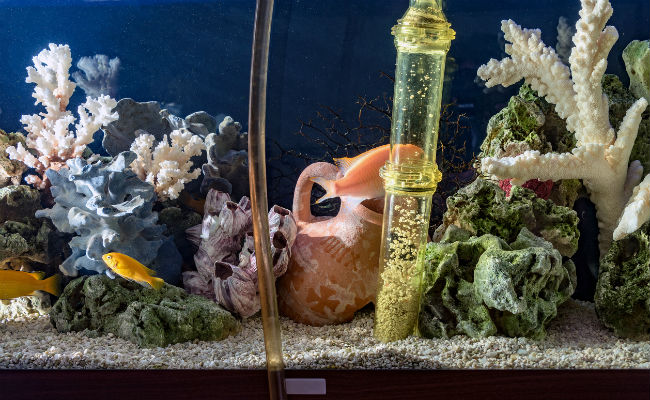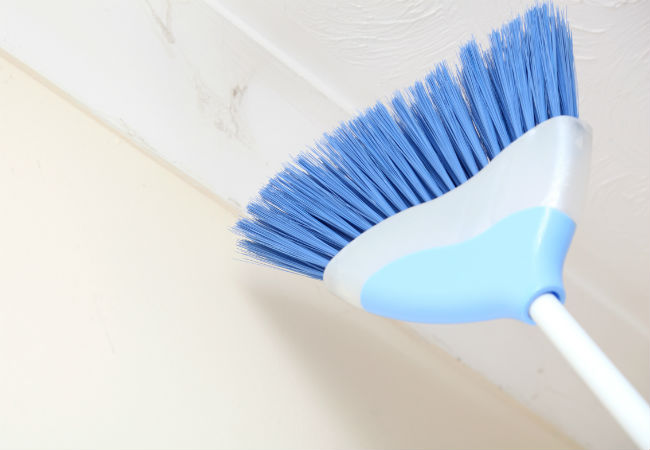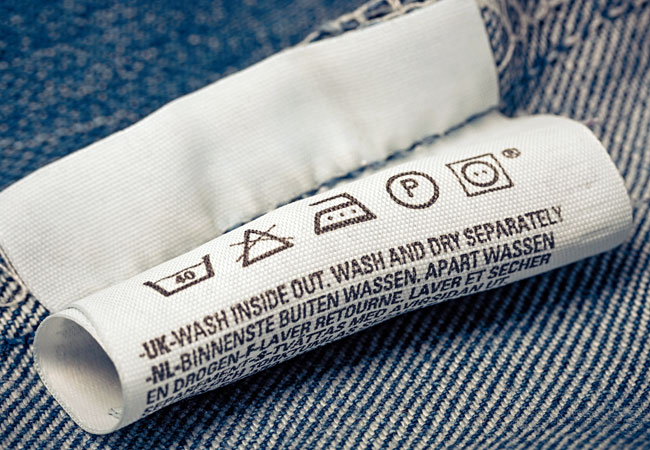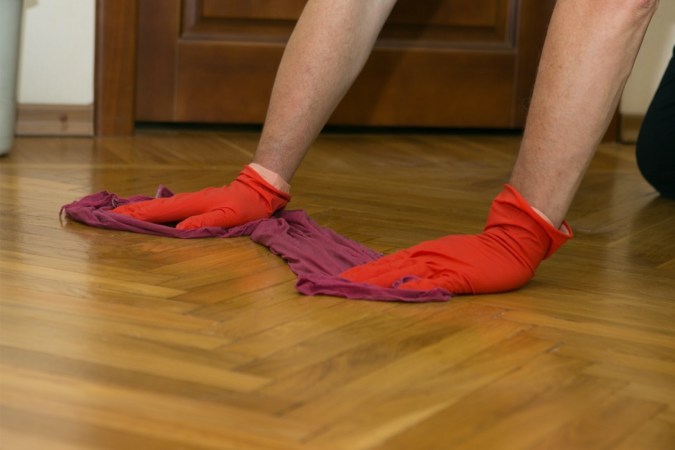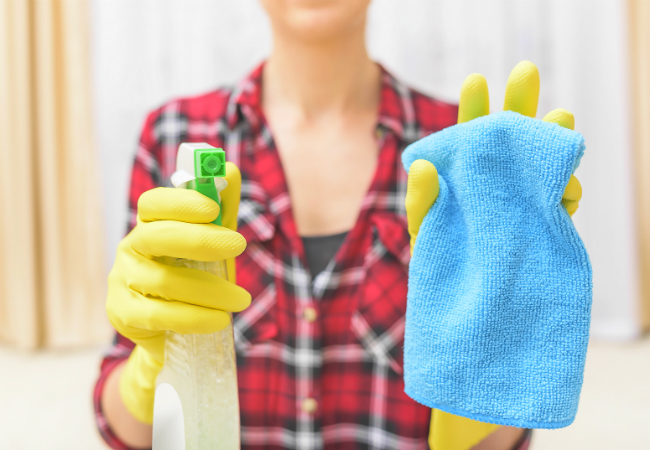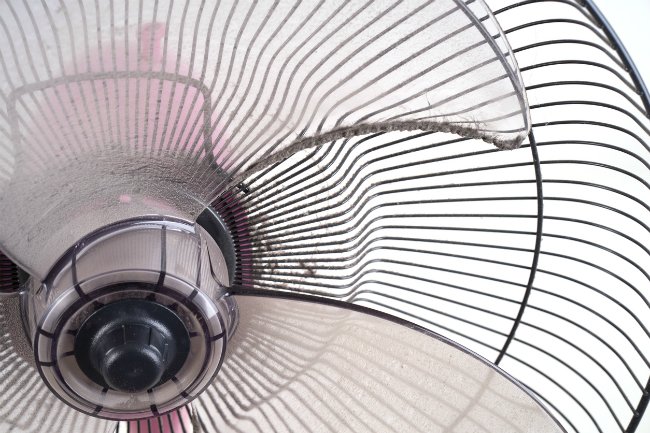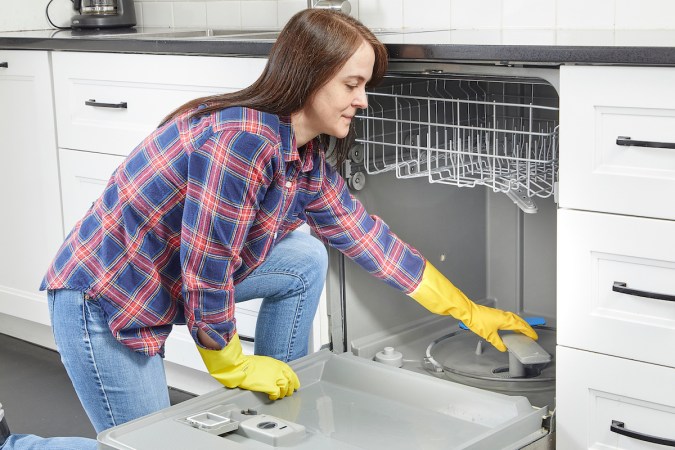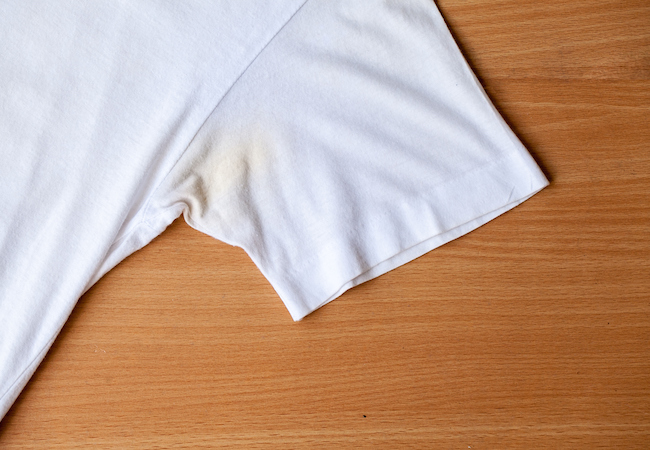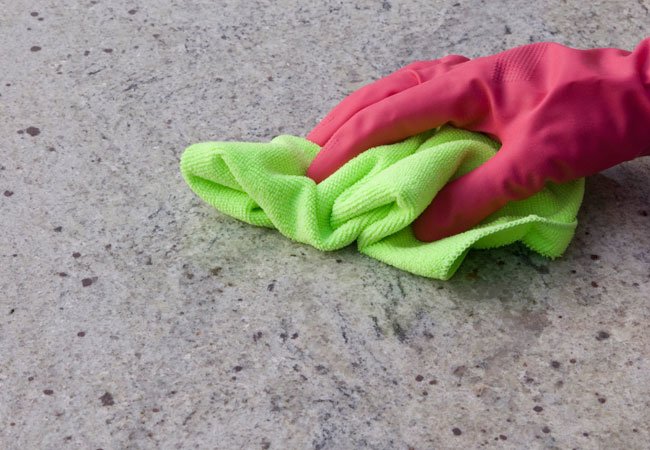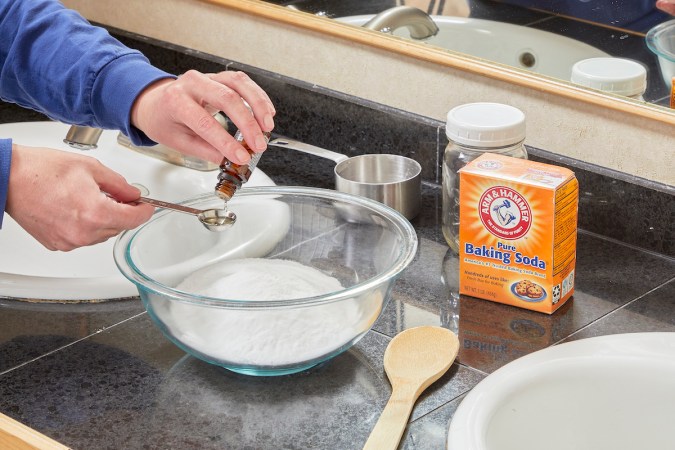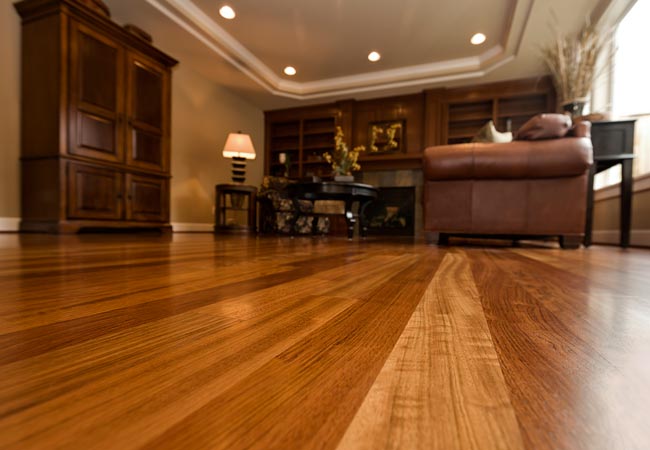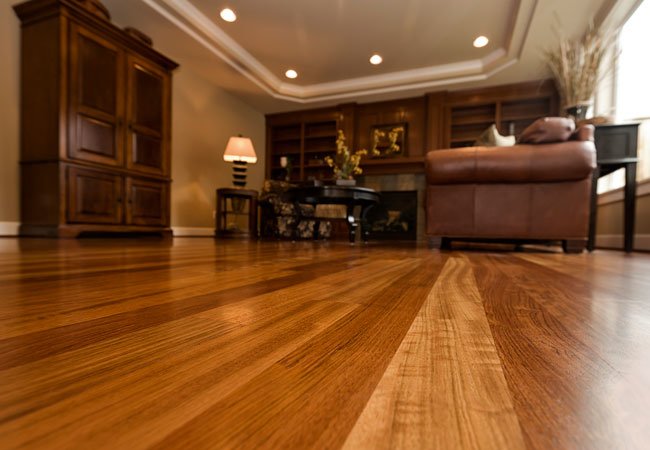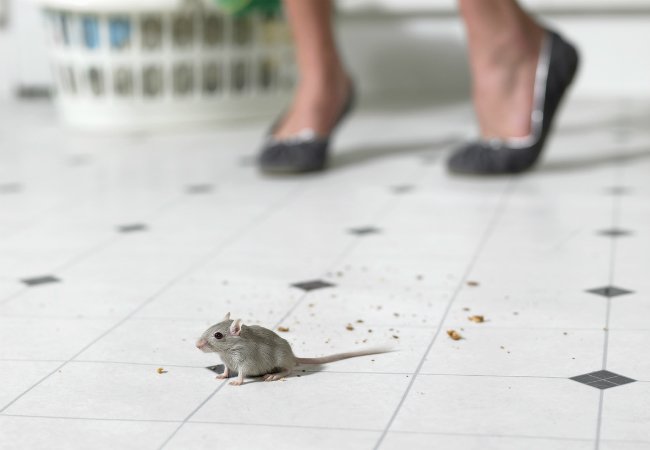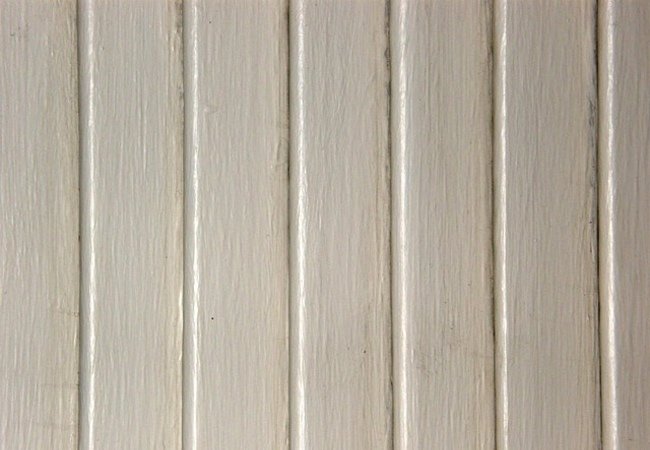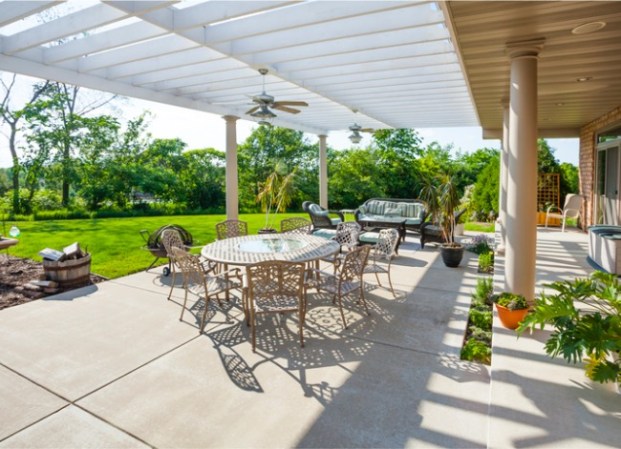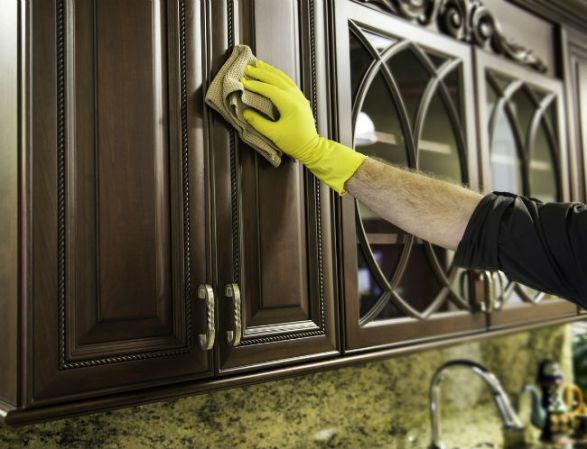We may earn revenue from the products available on this page and participate in affiliate programs. Learn More ›
Sodium hypochlorite—more commonly known as “chlorine bleach” or just “bleach”—is often used as a laundry additive for whitening items such as sheets, towels, and white T-shirts. Yet, while bleach is great for keeping white fabrics clean and bright, it’s also an effective disinfectant. You’ll find it on its own (Clorox bleach, available at Walmart) or as an additive in certain cleaners, such as Clorox Clean-up All Purpose Cleaner with Bleach (available from Amazon and Target).
Bleach has been used for decades to disinfect (destroy disease-carrying microorganisms) and sanitize (reduce the growth of microorganisms, particularly bacteria), both important processes in controlling or killing pathogens such as cold and flu viruses and the COVID-19 virus. However, using bleach comes with a few risks. Before you bleach everything you own, read on to learn how to safely disinfect your home with bleach.
RELATED: 8 Cleaning Mistakes Everyone Makes
1. Protect Yourself From Irritation
Bleach is corrosive and an irritant, so you’ll need to take precautions to protect your skin, eyes, and lungs before disinfecting with bleach. Keep bleach off your skin by wearing long rubber household gloves. Then, to avoid inhaling the fumes, open a window or two (a cross-draft is great) while you’re disinfecting with bleach. Ventilating the room also will help protect your eyes from the fumes, but if you have a pair of wraparound safety glasses, it’s a good idea to wear them for added protection.
2. Dilute Bleach Properly
You don’t have to use bleach at full strength to disinfect; it still is effective when diluted. The Centers for Disease Control and Prevention (CDC) recommend mixing ⅓ cup of bleach with 1 gallon of water. Add the gallon of warm water to a pail or large bowl first, and then carefully measure the bleach and pour it into the water. A few swishes with a gloved hand and you’re ready to start disinfecting. Avoid using hot water, which can cause the release of additional chlorine gas into the air.
3. Remove Dirt and Grime Before Disinfecting with Bleach
Bleach isn’t a cleaner and it won’t remove grease and grime, so you’ll need to use an appropriate all-purpose cleaner before disinfecting with the diluted bleach mixture. The alternative is to use a commercial product that contains bleach, such as Tilex Mildew Remover with Bleach (available at The Home Depot). If you’re using a cleaner product with added bleach, make sure the label says it is a “disinfectant,” and follow the application instructions carefully. For example, when using the Tilex product, the solution must remain on the surface for 10 minutes before rinsing or wiping off with paper towels. Avoid cleaners that claim to have “color-safe” bleach, because they do not contain chlorine bleach and are not effective at killing germs.
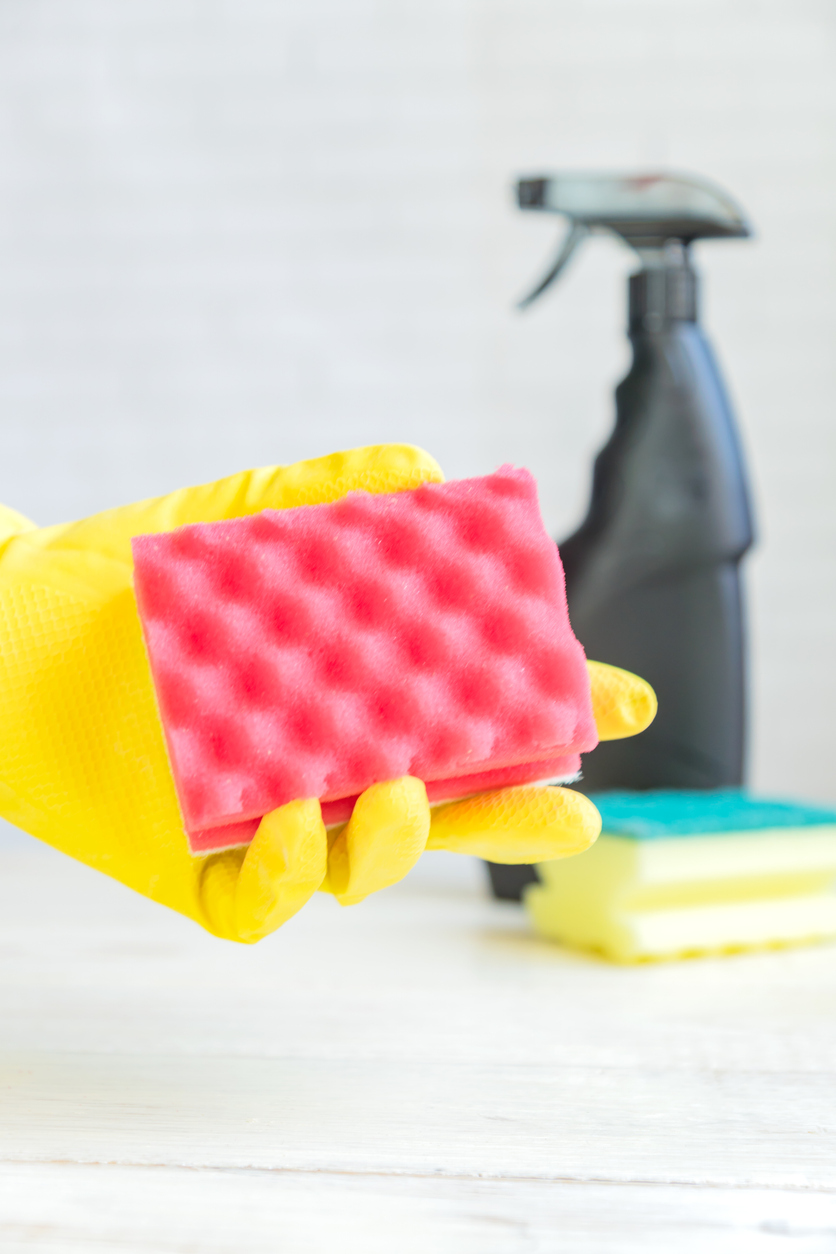
4. Sponge, Don’t Spray Bleach
Unless you’re using a spray cleaner that comes with added bleach, don’t pour the diluted bleach solution into a spray bottle and spray it on surfaces. Ordinary spray bottles homeowners can purchase at supermarkets or home improvement centers often feature metal trigger assembly parts that will corrode when they come into contact with bleach. This corrosion might give the spray a rusty color and can reduce the disinfecting power of the bleach. The best way to disinfect with your diluted mixture is to dip a sponge into the solution, wring it out, and then use the sponge to apply the solution to the surface. Leave it on for 10 minutes before rinsing or wiping with paper towels.
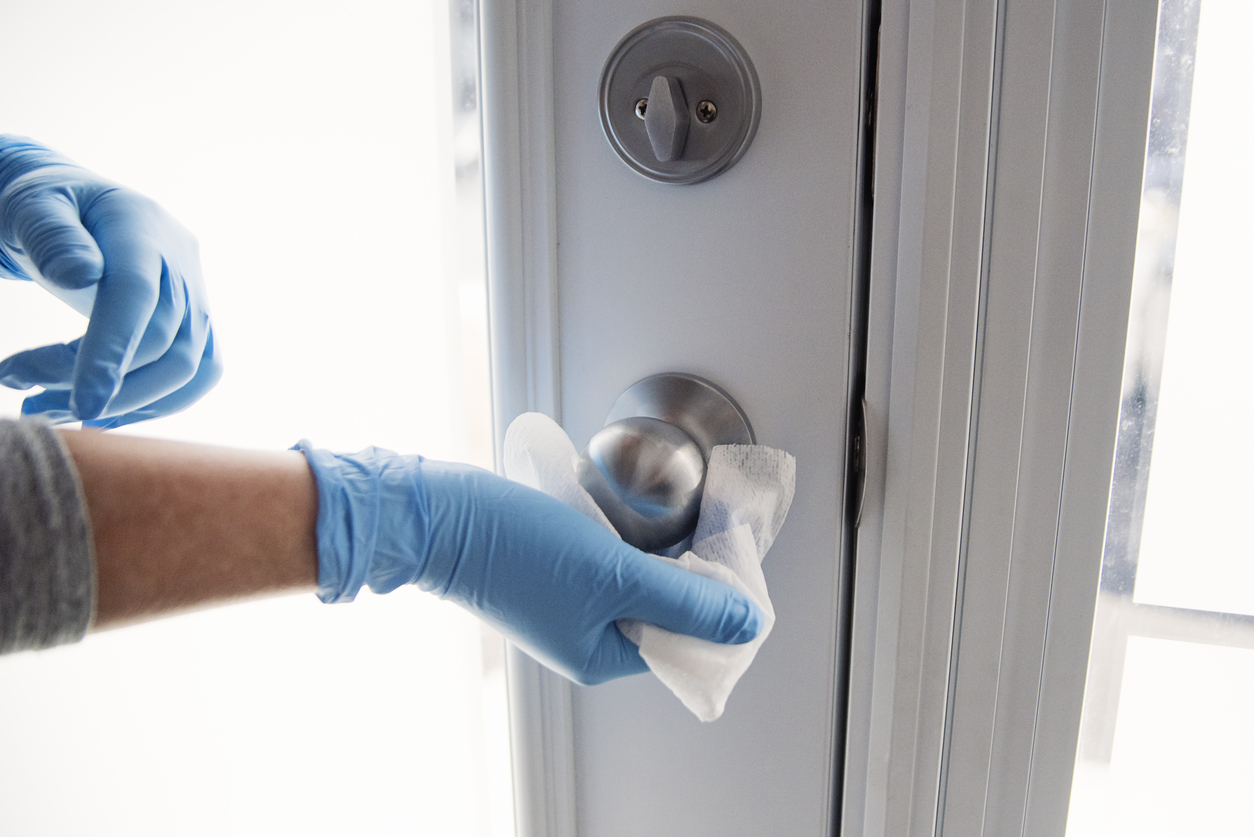
5. Apply Bleach Only to Nonporous Surfaces
From floor to ceiling, you can disinfect virtually all nonporous surfaces with a diluted bleach solution. For the healthiest home, focus first on frequently touched surfaces, such as countertops, faucets, doorknobs, drawer pulls, sinks, tubs, and toilets. You also can wipe down plastic toy boxes, cabinets, doors, and sealed or painted wood furniture, but avoid bare wood and upholstered furniture. Bleach can cause bare wood grain to swell and can leave stains on upholstery. For porous items, use a different type of disinfectant that’s color-safe and won’t damage the item, such as Lysol Disinfectant Spray (available at Amazon).
6. Don’t Mix Bleach With Other Cleaners
The safest way to use bleach is to mix it with water—nothing else. According to the Washington State Department of Health, when people combine bleach with ammonia, they create toxic fumes that can cause a number of physical symptoms if inhaled, including chest pain, shortness of breath, and even pneumonia. Mixing bleach with other ingredients such as vinegar or rubbing alcohol also can produce dangerous fumes, so the best course of action is to mix the bleach only with plain water.
7. Dilute Bleach When Sanitizing Dishes
According to Clorox, a leading manufacturer of bleach products, you can safely sanitize household dishes, glasses, and flatware with bleach using a reduced concentration of bleach. Start by first washing and drying the dishes as you normally would, and then allowing them to soak for at least two minutes in a diluted bleach solution that contains 2 teaspoons of bleach for every 1 gallon of water. After removing the dishes from the bleach solution, allow them to air-dry on a dish rack.
8. Use Plain, Unscented Bleach to Disinfect Drinking Water
Chlorine bleach has long been used in water treatment plants and swimming pools to disinfect the water, and in emergency situations, the Environmental Protection Agency (EPA) recommends using bleach to disinfect drinking water as well. An emergency could be anything from a break in a main water supply line that contaminates tap water or having to rely on well water that you know is contaminated, but you are unable to find bottled water in the stores.
If you’re concerned about drinking tap water and can’t boil it, you can disinfect it with bleach. The caveat here is that you must use only basic, unscented liquid bleach that contains either 6 or 8.25 percent sodium hypochlorite (check the label). Don’t use any other type of bleach. You’ll need a dropper to measure the correct amount of bleach, depending on its strength.
- If the bleach contains 6 percent sodium hypochlorite, add 8 drops to 1 gallon of water.
- If the bleach contains 8.25 percent sodium hypochlorite, add 6 drops to 1 gallon of water.
Stir the water and let it stand for 30 minutes before drinking. The water should have a slight chlorine smell; if it doesn’t, repeat the above dosage, stir, and wait 15 more minutes before drinking.

